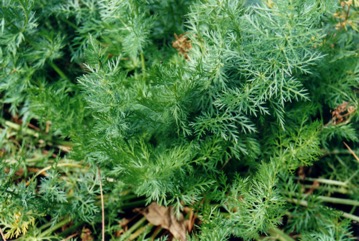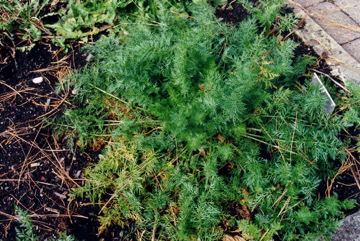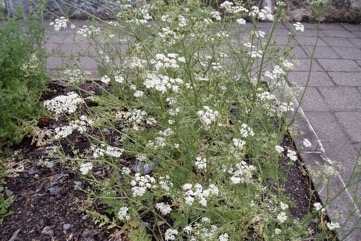Caraway

A temperate plant. A hardy plant. It needs a sunny, sheltered position. In Hobart Botanical gardens. It grows in Nepal from 2500-4500 m altitude. It suits hardiness zones 3-10. In Sichuan and Yunnan.
Also known as:
Alcaravia, Anis, Carvi, Cemen, Chir, Chhonyo, Comi, Comino, Go-snod, Gunyun, Frenk kimyonu, Jangli jira, Jeera, Jenuju, Jintan, Jira, Kala jeera, Kaluduru, Karawya, Karuwai, Karwij, Karvi, Kemenmag, Kemeny, Kim, Kitik, Kmin komeny, Koomen, Koomlid, Kosnyot, Kummel, Makozira, Navadna kumina, Rasca, Shia-jira, Shimai-shembu, Shimpaisapu, Sushavi, Tmin, Wilayati-zirah, Yuan-sui, Zera, Zira, Zirah-siah
Synonyms
- Apium carvi Crantz.
- Seseli carvi Lam.
- Carum carvi forma gracile L., (Lindl.) Wolff.
- Carum velenovskyi Rohlena
Edible Portion
- Seeds, Leaves, Roots, Stems, Herb, Spice
Where does Caraway grow?
Found in: Afghanistan, Africa, Albania, Australia, Asia, Austria, Balkans, Belarus, Belgium, Bhutan, Bosnia, Britain, Bulgaria, Canada, China, Cuba, Czech Republic, Denmark, East Africa, Egypt, Estonia, Ethiopia, Europe, Finland, France, Georgia, Germany, Greece, Himalayas, Holland, Hungary, Iceland, India, Indochina, Italy, Kyrgyzstan, Lithuania, Luxembourg, Mediterranean, Middle East, Morocco, Myanmar, Nepal, Netherlands, North Africa, North America, Norway, Pakistan, Poland, Prussia, Romania, Russia, Scandinavia, SE Asia, Serbia, Slovakia, Slovenia, Spain, Sweden, Switzerland, Syria, Tasmania, Thailand, Tibet, Turkey, Ukraine, United States, Yugoslavia
Notes: There are 30 Carum species.
Status: A common culinary herb. It is grown as a food plant.
Growing Caraway
Cultivation: It is grown from seed. It does not transplant well.
Edible Uses: The seeds are used to flavour cakes, bread and biscuits. They can also be used in vegetable dishes, pickles and coleslaw. They have a licorice flavour. They are used to flavour various alcoholic drinks. Caution: Alcohol is a cause of cancer. The young leaves are used to flavour soups, meats, cheese and salads. The tender leaves and shoots are cooked as a vegetable. The young roots can be cooked and eaten.
Production: It is harvested in the very early morning before seed heads shatter. Complete seed heads are stored for 10 days to dry out before threshing.
Nutrition Info
per 100g edible portion| Edible Part | Energy (kcal) | Protein (g) | Iron (mg) | Vitamin A (ug) | Vitamin c (mg) | Zinc (mg) | % Water |
|---|---|---|---|---|---|---|---|
| Roots | 108 | - | - | - | - | - | |
| Seed | 333 | 19.8 | 16.2 | 36 | 21 | 5.5 | 9.9 |
| Leaves | 27 | 4.9 | - | - | - | - |
Caraway Photos



References
Abbet, C., et al, 2014, Ethnobotanical survey on wild alpine food plants in Lower and Central Valais (Switzerland). Journal of Ethnopharmacology 151 (2014) 624–634
Ambasta S.P. (Ed.), 2000, The Useful Plants of India. CSIR India. p 107
Battacharyya, A., 1991, Ethnobotanical Observations in the Ladakh Region of Northern Jammu and Kashmir State, India. Economic Botany, Vol. 45, No. 3, pp. 305-308 (As Carum carvi forma gracile)
Bianchini, F., Corbetta, F., and Pistoia, M., 1975, Fruits of the Earth. Cassell. p 100
Bircher, A. G. & Bircher, W. H., 2000, Encyclopedia of Fruit Trees and Edible Flowering Plants in Egypt and the Subtropics. AUC Press. p 86
Bodkin, F., 1991, Encyclopedia Botanica. Cornstalk publishing, p 218
Boesi, A., 2014, Traditional knowledge of wild food plants in a few Tibetan communities. Journal of Ethnobiology and Ethnomedicine 10:75
Bonet, M. A. & Valles, J., 2002, Use of non-crop food vascular plants in Montseny biosphere reserve (Catalonia, Iberian Peninsula). International Journal of Food Sciences and Nutrition (2002) 53, 225–248
Bremness, L., 1994, Herbs. Collins Eyewitness Handbooks. Harper Collins. p 239
Brickell, C. (Ed.), 1999, The Royal Horticultural Society A-Z Encyclopedia of Garden Plants. Convent Garden Books. p 232
Brouk, B., 1975, Plants Consumed by Man. Academic Press, London. p 287
Brown, D., 2002, The Royal Horticultural Society encyclopedia of Herbs and their uses. DK Books. p 155
Burnie, G & Fenton-Smith, J., 1999, A Grower's Guide to Herbs. Murdoch Books. p 18
Bussman, R. W., et al, 2016, A comparative ethnobotany of Khevsureti, Samtskhe-Javakheti, Tusheti, Svaneti, and Racha-Lechkhumi, Republic of Georgia (Sakartvelo), Caucasus. Journal of Ethnobiology and Ethnomedicine (2016) 12:43
Cerne, M., 1992, Wild Plants from Slovenia used as Vegetables. Acta Horticulturae 318
Cheifetz, A., (ed), 1999, 500 popular vegetables, herbs, fruits and nuts for Australian Gardeners. Random House p 121
"Chinese Nutrition Journal", 2002, Vol 23(8) p 298
Christanell, A., et al, 2010, The Cultural Significance of Wild Gathered Plant Species in Kartitsch (Eastern Tyrol, Austria) and the Influence of Socioeconomic Changes on Local Gathering Practices. Chapter 3 in Ethnobotany in the New Europe. Berghahn Books. Cobley, L.S. (rev. Steele, W.M.) 2nd Ed., 1976, An Introduction to the Botany of Tropical Crops. Longmans. p 249
Cundall, P., (ed.), 2004, Gardening Australia: flora: the gardener's bible. ABC Books. p 334
Denes, A., et al, 2012, Wild plants used for food by Hungarian ethnic groups living in the Carpathian Basin. Acta Societatis Botanicorum Poloniae 81 (4): 381-396
Dogan, A., et al, 2014, A review of edible plants on the Turkish Apiaceae species. J. Fac. Pharm. Istanbul, 44(2) pp 251-262
Dorjey, K., et al, 2012, Ethnobotanical observations in Trans-Himalayan Region of Ladakh. Journal of Plant Development Sciences Vol. 4 (4): 459-464.
Dorjey, K., 2015, Exploration of Plant based Traditional Knowledge from Sham region of Ladakh (J. & K.), India. Journal of Plant Development Sciences Vol. 7 (5) : 429-433.
Ertug, F, Yenen Bitkiler. Resimli Türkiye Florası -I- Flora of Turkey - Ethnobotany supplement
Esperanca, M. J., 1988. Surviving in the wild. A glance at the wild plants and their uses. Vol. 1. p 186
Facciola, S., 1998, Cornucopia 2: a Source Book of Edible Plants. Kampong Publications, p 16
Ghimire, S. K., et al, 2008, Non-Timber Forest Products of Nepal Himalaya. WWF Nepal p 132
Gouldstone, S., 1983, Growing your own Food-bearing Plants in Australia. Macmillan p 187
Hedrick, U.P., 1919, (Ed.), Sturtevant's edible plants of the world. p 165
Hemphill, I, 2002, Spice Notes. Macmillan. p 101
http://nordicfood lab/org/blog/2102/9/wild-edible-plants-an-overview
Hu, Shiu-ying, 2005, Food Plants of China. The Chinese University Press. p 593
Kalle, R. & Soukand, R., 2012, Historical ethnobotanical review of wild edible plants of Estonia (1770s-1960s) Acta Societatis Botanicorum Poloniae 81(4):271-281
Kang, Y., et al, 2014, Wild food plants used by the Tibetans of Gongba Valley (Zouqu country, Gansu, China) Journal of Ethnobiology and Ethnomedicine 10:20
Kaul, M.K. et al, 1985, Ethno-botanic studies in North-West and Trans-Himalaya - contribution to the wild food plants of Ladakh. J.Econo. Tax. Bot. Vol. 6 No. 3 pp 523-527 (As Carum carvi forma gracile)
Kiple, K.F. & Ornelas, K.C., (eds), 2000, The Cambridge World History of Food. CUP p 432, 1745
Kishor, A., et al, 2018, Wild Food Plants of Himachal Pradesh: A Review. Plant Archives Vol. 18 No.2 pp. 2737-2751
Kybal, J., 1980, Herbs and Spices, A Hamlyn Colour Guide, Hamlyn Sydney p 68
Lazarides, M. & Hince, B., 1993, Handbook of Economic Plants of Australia, CSIRO. p 49
Lim, T. K., 2015, Edible Medicinal and Non Medicinal Plants. Volume 9, Modified Stems, Roots, Bulbs. Springer p 23
Łukasz Łuczaj and Wojciech M Szymański, 2007, Wild vascular plants gathered for consumption in the Polish countryside: a review. J Ethnobiol Ethnomedicine. 3: 17
Luczaj, L., 2012, Ethnobotanical review of wild edible plants of Slovakia. Acta Societatis Botanicorum Poloniae 81(4):245-255
Łuczaj, L., et al, 2013, Wild edible plants of Belarus: from Rostafiński’s questionnaire of 1883 to the present. Journal of Ethnobiology and Ethnomedicine 2013, 9:21
Luczaj, L., et al, 2015, Wild food plants and fungi used by Ukrainians in the western part of the Maramureş region in Romania. Acta Soc Bot Pol 84(3):339–346
Lukasz, L., 2016, Wild Edible Plants Traditionally Used in Poland.
Mabey, R., 1973, Food for Free. A Guide to the edible wild plants of Britain, Collins. p 148
Manandhar, N.P., 2002, Plants and People of Nepal. Timber Press. Portland, Oregon. p 138
Martin, F.W. & Ruberte, R.M., 1979, Edible Leaves of the Tropics. Antillian College Press, Mayaguez, Puerto Rico. p 222
Menninger, E.A., 1977, Edible Nuts of the World. Horticultural Books. Florida p 147
Miguel, E., et al, 1989, A checklist of the cultivated plants of Cuba. Kulturpflanze 37. 1989, 211-357
Molla, A., Ethiopian Plant Names. http://www.ethiopic.com/aplants.htm
Mulherin, J., 1994, Spices and natural flavourings. Tiger Books, London. p 30
Murugan, Pal M., et al, 2010, Phytofoods of Nubra valley, Ladakh - The cold desert. Indian Journal of Traditional Knowledge. Vol. 9(2): 303-308
Negi, P. S. & Subramani, S. P., 2015, Wild Edible Plant Genetic Resources for Sustainable Food Security and Livelihood of Kinnaur District, Himachal Pradesh, India, International Journal of Conservation Science. 6 (4): 657-668
Paoletti, M.G., Dreon, A.L., and Lorenzoni, G.G., 1995, Pistic, Traditional Food from Western Friuli, NE Italy. Economic Botany 49(1) pp 26-30
Pieroni, A.,& Giusti, M. E., 2009, Alpine Ethnobotany in Italy: Journal of Ethnobiology and Ethnomedicine. 5:32
Pieroni, A. & Soukand, R., 2017, Are Borders more Important than Geographical Distance? The Wild Food Ethnobotany of the Boykos and its Overlap with that of the Bukovinian Hutsuls in Western Ukraine. Journal of Ethnobiology 37(2): 326–345
Pieroni, A. & Soukand, R., 2018, Forest as Stronghold of Local Ecological Practice: Currently Used Wild Food Plants in Polesia, Northern Ukraine. Economic Botany, XX(X) pp. 1-21
Plants for a Future database, The Field, Penpol, Lostwithiel, Cornwall, PL22 0NG, UK. http://www.scs.leeds.ac.uk/pfaf/
Purseglove, J.W., 1968, Tropical Crops Dicotyledons, Longmans. p 650
Raghavan, S., 2007, Handbook of Spices, Seasonings, and Flavourings. Second Edition. CRC Press p 78
Rana, J.C. et al, 2011, Genetic resources of wild edible plants and their uses among tribal communities of cold arid regions of India. Genetic Resources and Crop Evolution. 59:135-149
Rawat, G.S., & Pangtey, Y.P.S., 1987, A Contribution to the Ethnobotany of Alpine Regions of Kumaon. J. Econ. Tax. Bot. Vol. 11 No. 1 pp 139-147
Redzic, S. J., 2006, Wild Edible Plants and their Traditional Use in the Human Nutrition in Bosnia-Herzegovina. Ecology of Food and Nutrition, 45:189-232
SAYCE
Seidemann J., 2005, World Spice Plants. Economic Usage, Botany, Taxonomy. Springer. p 87
Sharma, L. et al, 2018, Diversity, distribution pattern, endemism and indigenous uses of wild edible plants in Cold Desert Biosphere Reserve of Indian Trans Himalaya. Indian Journal of Traditional Knowledge. Vol 17(1) January 2018 pp 122-131
Sher, H. et al, 2011, Ethnobotanical and Economic Observations of Some Plant Resources from the Northern Parts of Pakistan. Ethnobotany research & Applications 9:027-041
Shikov, A. N. et al, 2017, Traditional and Current Food Use of Wild Plants Listed in the Russian Pharmacopoeia. Frontiers in Pharmacology. Vol. 8 Article 841
Simkova, K. et al, 2014, Ethnobotanical review of wild edible plants used in the Czech Republic. Journal of Applied Botany and Food Quality 88, 49-67
Solomon, C., 2001, Encyclopedia of Asian Food. New Holland. p 64
Soukand, R., et al, 2017, Multi-functionality of the few: current and past uses of wild plants for food and healing in Liubań region, Belarus. Journal of Ethnobiology and Ethnomedicine (2017) 13:10
Sp. pl. 1:263. 1753
Svanberg, I., et al, 2012, Edible wild plant use in the Faroe Islands and Iceland. Acta Societatis Botanicorum Poloniae 81(4): 233-238
Tardio, J., et al, 2006, Ethnobotanical review of wild edible plants in Spain. Botanical J. Linnean Soc. 152, 27-71
Tyagi, R. K., et al, 2004, Conservation of Spices Germplasm in India. Indian J. Plant Genet. Resour. 17(3): 163-174
Uprety, Y., et al, 2016, Traditional use and management of NTFPs in Kangchenjunga Landscape: implications for conservation and livelihoods. Journal of Ethnobiology and Ethnomedicine (2016) 12:19
van Wyk, B., 2005, Food Plants of the World. An illustrated guide. Timber press. p 121
Yeshi, K. et al, 2017, Taxonomical Identification of Himalayan Edible Medicinal Plants in Bhutan and the Phenolic Contents and Antioxidant Activity of Selected Plants. TBAP 7 (2) 2017 pp 89 - 106